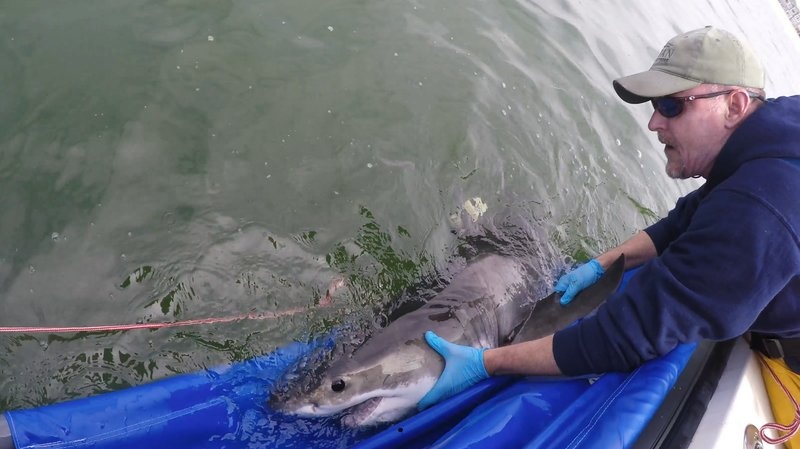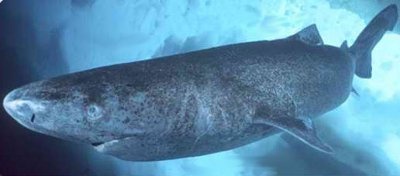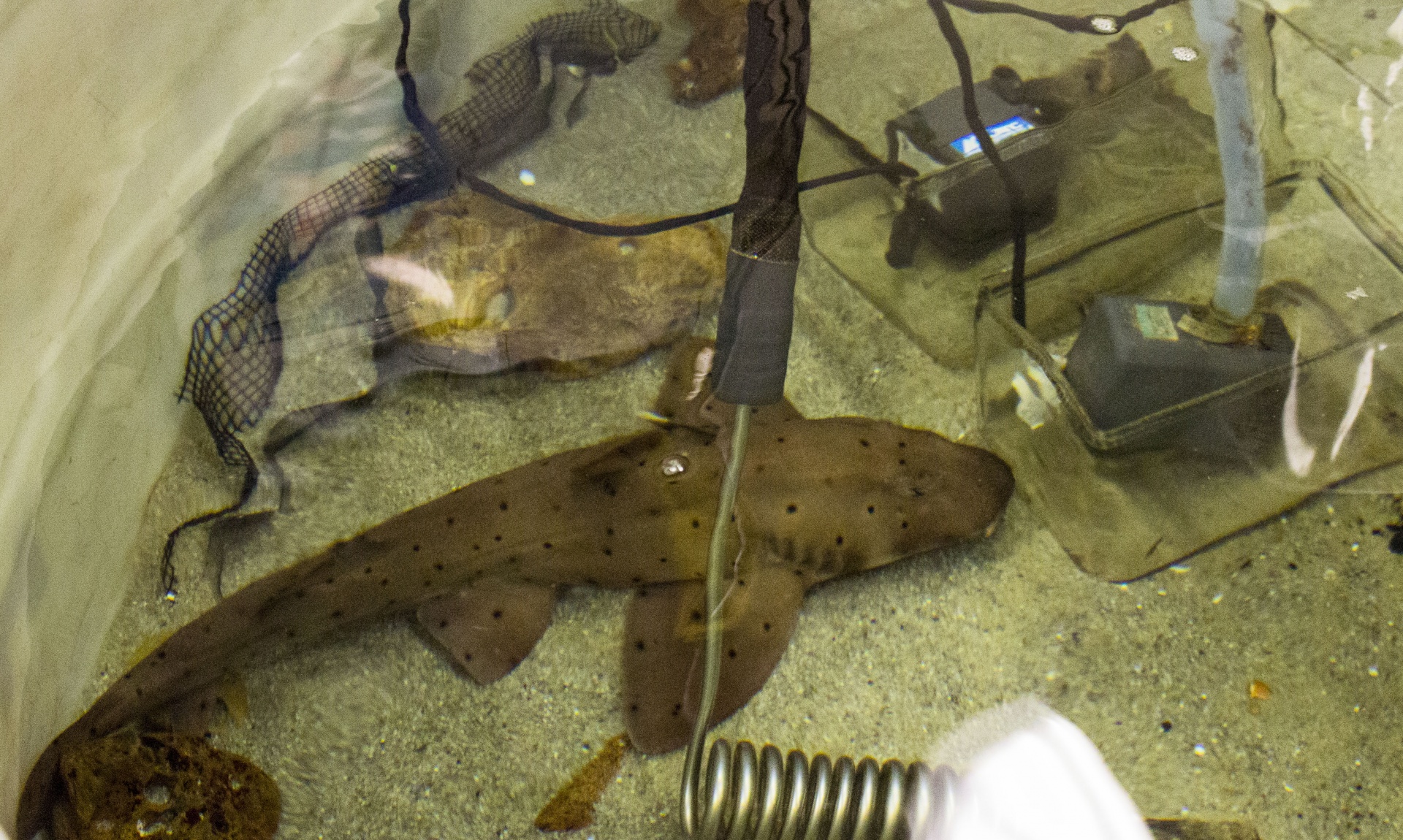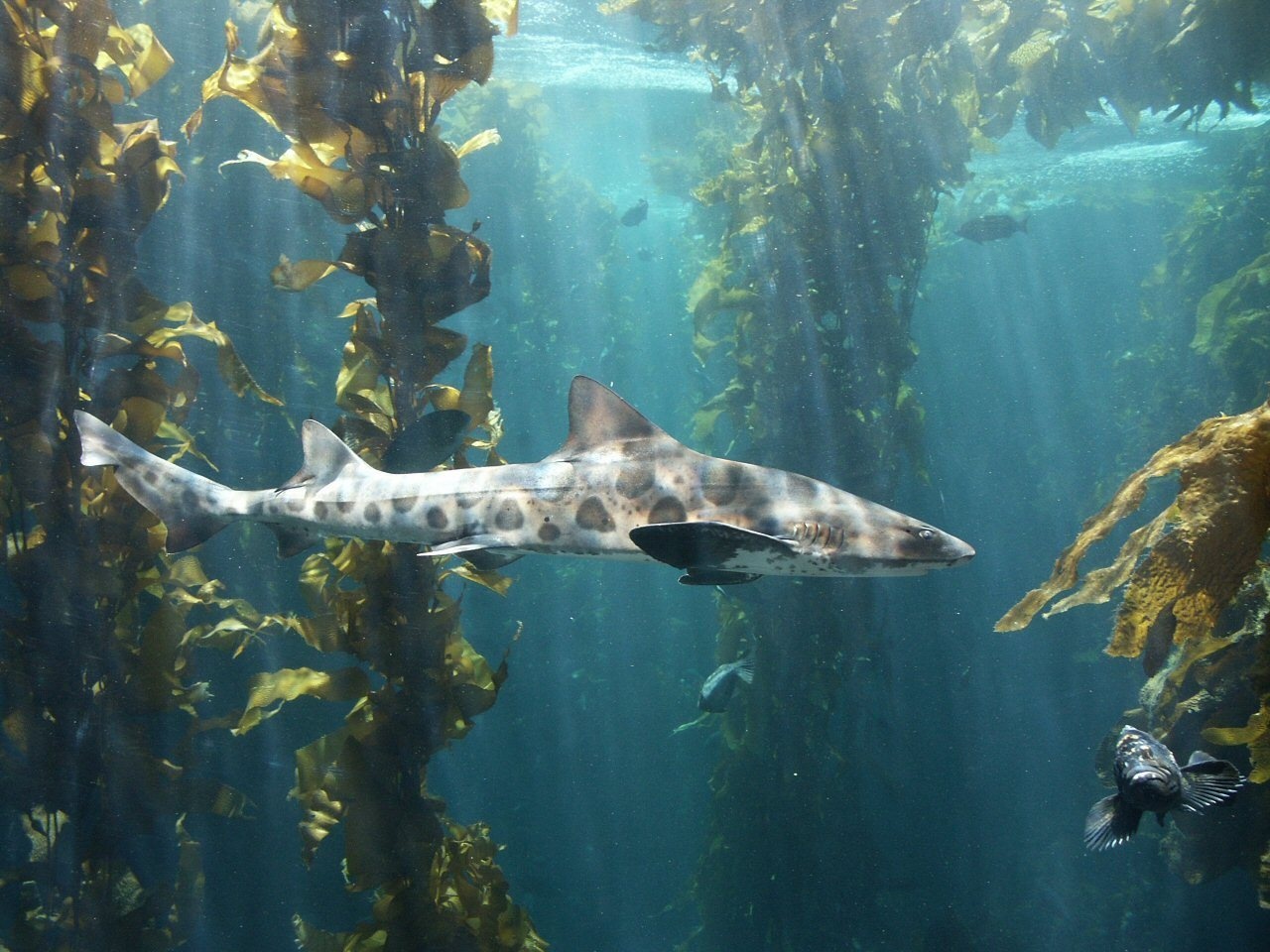CSULB's Shark Lab Prepares Future Ocean Conservationists
An inside look at student-led shark research at The Beach
Like many on campus, you may have heard about the famous CSULB Shark Lab, but did you know that it is home to one of the most well equipped, largest acoustic telemetry labs on the west coast? Since it was established in 1966, the Shark Lab has embarked on a very important mission: to study the physiological and behavioral ecology of marine animals by developing and utilizing innovative telemetry technology that will ultimately aid in the conservation and restoration of depleted marine ecosystems.
Critical to this mission is the focus on inspiring and mentoring the next generation of marine biologists and conservationists.

Dr. Chris Lowe tagging a juvenile white shark off the SoCal coast to study shark hot spots
Dr. Chris Lowe, professor in marine biology and director of the CSULB Shark Lab, spent a majority of his childhood fishing and exploring the waters around Cape Cod. It was his curiosity and passion for marine life and the ocean environment that propelled him toward a future career in marine research.
After receiving a Master of Science degree in biology at CSULB and a doctorate in zoology at the University of Hawaii, Lowe returned to his alma mater with a personal mission: to teach the next generation of ocean researchers and conservationists.
Under his mentorship, Lowe’s graduate students have made ground-breaking contributions to juvenile shark research and have gone on to pursue careers in marine conservation and management.
The pride for his students is apparent.
“I want my students to fail,” said Lowe, who knows the great things his students are capable of and believes that they learn more through their failures than through their successes. This willingness to challenge his students and encourage them to push past initial failures has allowed Lowe and his students to break barriers in shark research.
Here’s more on how his next generation of groundbreaking marine biologists are making waves:
Taylor Smith: The Metabolic Rates of Sleeper Sharks
Taylor Smith is a first-year graduate student studying the metabolism of sleeper sharks, a shark species in Alaska that prefers deeper, colder waters. Taylor hopes to learn more about their metabolic rates and behavioral changes by using respirometers to read the sleeper sharks’ oxygen consumption levels.
“We will be taking [blood] samples to get a general idea of the health of the animal. Once we run through the experiments, we tag them so that we can track and monitor them over time and then release them back into their natural habitat,” said Smith.

Sleeper sharks are slow-moving, deep
Smith will be going back to Alaska to continue her research once the sleeper sharks have returned to the area. Her work will provide a better understanding of the health and metabolic rate of sleeper sharks, information that can possibly be used to inform crucial conservation efforts.
Emily Meese: The Ecological Footprint of Horn Sharks
Emily Meese is a third-year graduate student working with horn sharks, a small, bottom-dwelling species commonly found along the west coast (and in the CSULB Shark Lab).
During a research expedition in Catalina Island, Emily tracked horn sharks to study their activity level and ecological footprint.

Horn shark held in CSULB Shark Lab for shark behavior research
“One of the cool things about them is that they are one of the few urchin predators,” said Meese, “Urchins will graze on kelp and if enough horn sharks are present, they are able to regulate those urchin populations. This allows there to be a sustainable kelp forest,” which, Meese explains contributes to a more natural and sustainable environment for marine life.
Jack May: Using Temperature to Determine Leopard Shark Vulnerabilities
Characterized by their unique dark spots and saddle-like markings, leopard sharks are the focus of Jack May’s conservation research.
“In the early 1990s-late 1980s there used to be a near-shore gill net fishery off of Southern California. Since banning gill net fishing, the leopard shark population has recovered. Although they are no longer threatened, past research has implied that they can become vulnerable really quickly,” said Jack May, a second-year graduate student.

Mature female leopard sharks are known to aggregate in the summer.
May’s concern for leopard sharks sparked his interest in researching their movement and temperature preferences to determine their vulnerabilities.
“Aerial surveys and sea floor sensors will allow me to create a temperature map to determine what kind of temperatures they [prefer],” said May.
Down the road, May hopes that the findings from his study will help to ensure that leopard sharks stay protected in vulnerable waters.
Echelle Burns: Impact of Waste Water Management on Marine Ecosystems
Conducting research comes with its own set limitations and challenges. Public agencies, such as the Orange County Sanitation District, are no strangers to this concept. This is where the research of Echelle Burns, a second year graduate student, comes into play.

OCSD is a public agency that provides wastewater collection, treatment, and disposal services for approximately 2.6 million people in central and northwest Orange County.
“My project focuses on tracking the movements of several flatfish species along a wastewater outfall at the Orange County Sanitation District. The OCSD takes some of these fish and does contamination analysis on them to make sure that what they’re doing with the waste water is appropriate and doesn’t have adverse effects on the marine life or the fish,” said Burns.
Burns is reviewing the studies conducted at the outfall to evaluate the effectiveness of OCSD’s current waste water management and identify strategies for improvement.
“I’m finding that the fish they are sampling at the outfall can actually be the same fish that they are sampling really far away. So they are just using the same population for two different studies,” said Burns.
With regard to conservation, Burns’ study is important for understanding and improving the outfall screening process for contaminants, including estradiol from birth control pills, that are difficult to identify and can hurt marine life.
About the Shark Lab
The research being conducted to understand sharks and other fish species and to answer challenging conservation questions showcase the Shark Lab as an innovative environment for training the next generation of marine biologists and a major player in ocean sustainability.
“The most important thing that people can do to help sharks is to recognize their importance,” said Lowe, “You know, we need them in the environment, they’re not as scary as they’re made out to be.”
People can help by supporting shark research, learning more about these diverse and interesting creatures, and fighting to dispel the “sharks-as-monsters” stigma perpetuated by films such as “The Shallows” and “Jaws.”
Dr. Donald Nelson founded the Shark Lab in 1966 to further understand these animals by studying sensory biology and behavior of sharks. Dr. Christopher Lowe took over and kept the legacy alive in 1998 after Don passed away.
For a more information about the Shark Lab and its work, please visit their site.
Valerie Rose Palacios is a third-year Psychology major and Marketing minor who works as the Communications & Outreach Student Assistant in the CSULB Office of Sustainability





